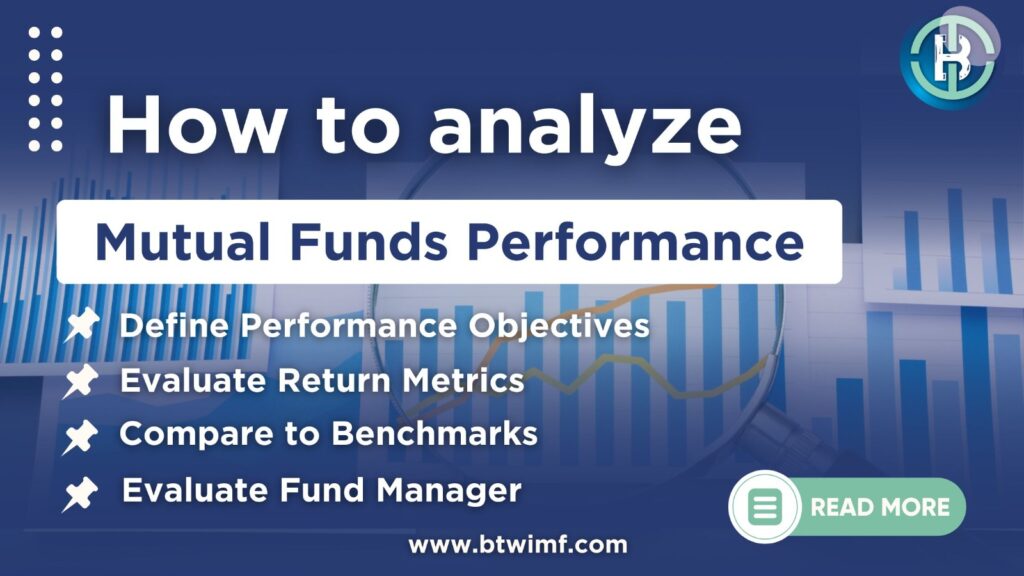How to Analyze Mutual Fund Performance
Summary:
Purpose: Inform investment decisions and ensure alignment with financial goals and risk tolerance.
- Key Analysis Components:
- Quantitative: ROI, Standard Deviation, Sharpe Ratio, Alpha, and Beta.
- Qualitative: Fund Manager’s strategy, Economic Conditions, and Awards.
- Comparative: Peer Group and Benchmark analyses.
- Tools: Financial Websites, Fund Company Websites, and Financial Advisors.
- Outcome: Informed decisions to Invest, Hold, or Rebalance/Withdraw based on fund performance and goal alignment.
- Ongoing Requirement: Continuous monitoring to adapt to changing market conditions and investment objectives.
Table of Content
- Introduction to Mutual Fund Analysis
- Pre-Analysis Checklist
- Quantitative Analysis
- Qualitative Analysis
- Comparative Analysis
- Tools and Resources for Analysis
- Decision Making Based on Analysis
- Conclusion
1. Introduction to Mutual Fund Analysis
Analyzing mutual fund performance is crucial for making informed investment decisions, ensuring alignment with your financial goals, and managing risk tolerance effectively. Understanding the basics of mutual funds, including their diversified portfolios of stocks, bonds, or other securities managed by professionals, is key.
2. Pre-Analysis Checklist
Before diving into analysis, define:
- Investment Objectives: Growth, Income, Balanced
- Risk Tolerance: Conservative, Moderate, Aggressive
- Gather necessary information on the fund’s historical performance, benchmark performance, fees, portfolio composition, and manager’s tenure.
3. Quantitative Analysis
Evaluate the fund using:
- Return on Investment (ROI): Higher is better
- Standard Deviation: Measures volatility; lower is generally better
- Sharpe Ratio: Risk-adjusted return; higher indicates better performance per unit of risk
- Alpha: Excess return over benchmark; positive is desirable
- Beta: Volatility relative to benchmark; <1 less volatile, >1 more volatile
4. Qualitative Analysis
Assess:
- Fund Manager’s Strategy and Consistency: Understanding the investment approach and its consistent application
- Economic and Market Conditions Impact: Evaluating performance in various market conditions
- Awards or Recognitions: Indicators of excellence, though not the sole criterion
5. Comparative Analysis
- Peer Group Comparison: Identify similar funds by asset class, size, or strategy, and compare KPIs
- Benchmark Comparison: Evaluate outperformance or underperformance against a selected benchmark over various periods
6. Tools and Resources for Analysis
Utilize
- Financial Websites for detailed analysis and overviews
- Fund Company Websites for the most current and detailed information
- Financial Advice: Consult Licensed Financial advisor.
7. Decision Making Based on Analysis
- Invest/Increase Investment: If the fund meets or exceeds expectations
- Hold: If performance meets expectations with no strong reason to adjust
- Rebalance/Withdraw: If the fund fails to meet expectations or no longer aligns with investment goals
8. Conclusion
Regular mutual fund analysis is vital for effective financial planning. By understanding and applying these quantitative and qualitative analysis techniques, investors can make informed investment decisions. Remember, continuous monitoring of your mutual fund’s performance is key to ensuring ongoing alignment with your investment goals and risk tolerance
Disclaimers: The above information is for reference purposes only: Policy Assurance and Claims at the underwriter’s discretion.



